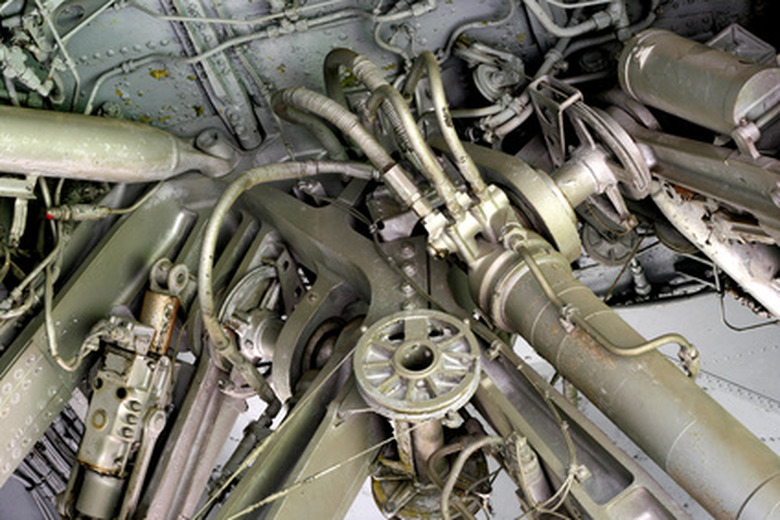Pneumatics & Hydraulics Projects
Pneumatic and hydraulic systems operate with fluids. Hydraulic systems use a liquid–usually oil. Pneumatic systems use gases–usually air. Hydraulic systems are great for lifting things and pneumatic systems are good for flexible and "bouncy" projects. Many of the attributes of the systems come directly from the nature of the fluid that is being used.
Hydraulic Lifting Systems
Hydraulic Lifting Systems
The best project for hydraulics is some sort of lifting project. Hydraulic systems lift cars so mechanics can look under them. They lift and lowed barber chairs and they are used to lift those elevators that only move a few feet–for wheelchair access. You can also find them on dump trucks–lifting the back so the contents slide out. You don't see them, but they also operate control surfaces on ships, helicopters and airplanes. All of these uses can make a good project, but the barber chair is easy, fun and safer than other possible hydraulic lifting systems.
McKibben Artificial Muscle
McKibben Artificial Muscle
McKibben was a physicist whose daughter had polio. While she was in the hospital, he started thinking about muscles and how to build an artificial one. His solution was the McKibben artificial muscle. It consists of an inflatable tube in a metal mesh. When the tube expands it shortens and when it deflates it elongates. These artificial muscle act more like human muscles than many of the other systems that have been used for robotic arms and legs. Using McKibbens, you can build a robotic arm (legs are a much more difficult project–it must balance) that moves like a human arm. You can make your own McKibbens or buy them and you can use them in conjunction as needed for more power. They should be arranged on the arm like the pairs of muscles on the human arm–one muscle is tensed while its counterpart (on the other side of the arm) is relaxed. The muscles reverse roles to move the arm the other way.
Fluid Logic
Fluid Logic
At NASA and at the Johnson Space Flight Center, one of the hot research topics is using hydraulics and pneumatics–instead of electronics–to implement digital logic. Space is a place that is very hostile to electronics. One solar burst (storm on the Sun) can knock out all electrical systems that were not properly shielded. Fluid systems are immune to radiation. NASA already uses fluid logic systems to do some of the switching on and off of some stage separation and retro rockets. If you know something about digital circuits it is fairly easy to build fluid logic systems. For example, a logical OR circuit can be represented by the junction of two tubes–if there is an input to either or both inputs there is an output. A logical AND is similar to the OR except each stream deflates the other and only when both are active is the stream diverted to the correct output. The logical NOT is achieved by having the input stream divert a stream. The exact configurations depend on the systems. This could be a science fair winner.
References
Cite This Article
MLA
Pick, Jo. "Pneumatics & Hydraulics Projects" sciencing.com, https://www.sciencing.com/pneumatics-hydraulics-projects-6909978/. 24 April 2017.
APA
Pick, Jo. (2017, April 24). Pneumatics & Hydraulics Projects. sciencing.com. Retrieved from https://www.sciencing.com/pneumatics-hydraulics-projects-6909978/
Chicago
Pick, Jo. Pneumatics & Hydraulics Projects last modified March 24, 2022. https://www.sciencing.com/pneumatics-hydraulics-projects-6909978/
